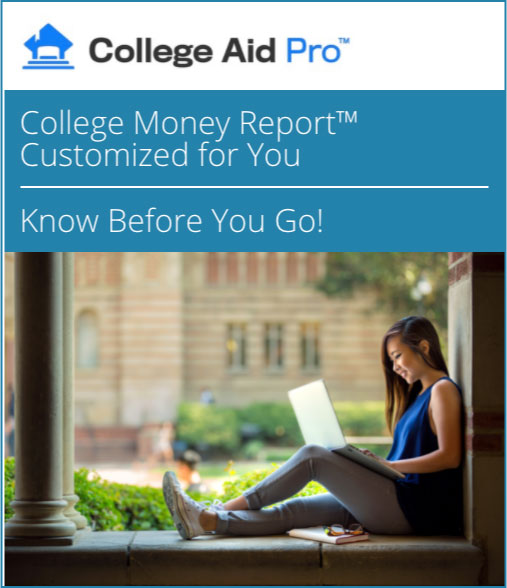Borrowing To Pay For College: Options For Parents
By Joe Messinger, CFP®
March 8, 2024
Your student has made a college choice. You have accounted for all your savings, cash flow, scholarship, and grant options. And you discover you still haven’t covered all the costs. In other words:
You have a funding gap.
Student loans and borrowing to pay for college will have to be a part of the solution.
You are not alone. Loans are part of the equation for nearly 7 out of 10 students.
Be sure to use student federal loans first.
Now, say you’ve also maxed out the federal student loan funds available. Students have a certain dollar amount in federal loans they can borrow each year:
- $5,500 freshman year
- $6,500 sophomore year
- $7,500 junior & senior year
These loans do not require a co-signer, offer reasonable interest rates, flexible repayment options, build the student’s credit, and don’t jeopardize the parent’s savings and retirement.
Still have a funding gap?
After student federal loans are maxed out, do you still have a funding gap? What options remain? Private loans, Parent PLUS loans from the government, home equity loans, or loans on retirement plans are all places you can look to cover this gap.
Before we cover these options, we want to stress the importance of using any of these to fund a SMALL gap. Any of these loans in large amounts can have a profound effect on you financially. So, keep these loans to a minimum to fund small college funding gaps only.
Parents have two primary loan options to explore first: Parent PLUS and private parent student loans.
Interest Rates & Loan Fees
One key difference between the two is the interest rate. Finding the best rate for you will depend on your credit rating. The Parent PLUS loan is a fixed interest rate of 8.05% (if disbursed before on or after July 1, 2023, and before July 1, 2024 — check this site for ongoing rate updates) for the life of the loan. For loans beginning after July 1, 2024, the new interest rate will be 9.08%. Your credit rating is not considered when setting the rate. (Although you must not have an adverse credit history to qualify.) This relatively high rate is based on a group credit rating. If you have a better credit rating, your interest rate through a private lender may be lower.
Is it a fixed rate?
Watch out for introductory rates and initially low variable rates. Variable rates tend to increase over time, causing your payments to go up. Private loan interest rates may be fixed or variable. The PLUS rate is fixed and, while higher, will not change throughout the life of the loan.
Are there origination fees?
For PLUS loans, a loan fee of 4.228% (for loans taken out after October 2020) will be deducted from the loan disbursement amount. For private loans, any applicable fee depends on the lender, so read the terms carefully.
Repayment Options
Another critical difference between PLUS and private loans is repayment options. Private loans typically offer different terms like 10, 15, or 20 years. PLUS loan repayment plans include the Standard (ten years) and Graduated and Extended plan options. The Graduated plan payments are lower at first, and then gradually increase over the life of the loan (usually ten years). The Extended plan allows fixed or graduated payments but increases the term to 25 years.
Unless you request deferment of student loan payments, you will start being billed soon after disbursement of the funds (often in 60 days). With PLUS loans, you can defer payment until after the student graduates from college. Interest continues to accrue during that time.
With private loans, they may have more available options. You could start making payments in 60 days, or you could choose to make interest-only payments while the student is in college, paying a fixed amount like $25 per month until graduation, or deferring payments altogether until after graduation. Unpaid interest will accrue.
Who’s Responsible?
We always recommend that parents do not take out private loans in their own names. Having the student take out the loan in their name is a better idea. It builds credit and puts the responsibility on the student.
However, students will not qualify for credit independently, so parents must be co-signers. Parents must realize that co-signing the loan makes them as liable for the payments as their students. Those loans will appear on the parent’s credit report as well. Understand those responsibilities before signing on the dotted line.
Parent PLUS loans are 100% in the parent’s name (the federal PLUS loan program is also for graduate or professional students). Sometimes, parents think they can transfer this loan to the student after the student graduates. That is incorrect. The parent is the borrower for the life of the loan.
Future Considerations
What happens if a parent or student dies? With a PLUS loan, if the parent or student dies, the loan is discharged or forgiven. With a private loan, that is not necessarily the case. It depends on the lender.
How do I apply?
Parents complete the FAFSA each year to obtain PLUS loans, and the school will direct you on how to set up the PLUS loan.
A good place to start is with your college’s financial aid office to obtain private loans. They may have preferred lenders they recommend, but you are not bound to choose one of them. You can visit websites like www.studentloanhero.com or www.simpletuition.com to find and compare lender information.
Another place to check is with your local credit union. They often offer favorable rates to members.
Final Thoughts
There is no limit to how much a parent can borrow so long as it does not exceed the cost…a dangerous situation when college costs up to $70,000+ per year. Carefully consider the long-term impact of taking on too much debt. Choose a college you can afford, plan out how you’ll cover all four years of the costs down to the penny, and use loans wisely to cover small gaps.
Updated March 2024


